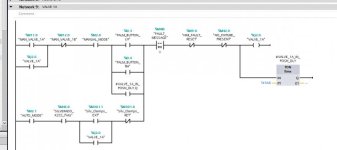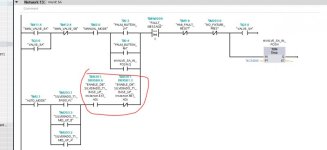koolsmoke
Member
I have been talking with a new hire about programming practices good/bad. We received a program from one of our customers from an internal controls engineer. As I was looking through his program I found that he was using in his output logic the physical output address used to seal itself in.
In the past I had learned that any seal-ins would be done in manual mode, auto mode, or home sequencing. When we were discussing this internally our new hire gave some valid points as to how this was beneficial, but if I had never seen this done before then I have to ask what are to cons to this. He stated that, for the most part, an output like an air cylinder is either extended or retracted.
Being in the industry for a little over 3 years i know this not to always be the case. As well, all the old timers that i learned from never did this.
If anyone can shed light on this practice please feel free to enlighten me if this is a good or bad practice.

In the past I had learned that any seal-ins would be done in manual mode, auto mode, or home sequencing. When we were discussing this internally our new hire gave some valid points as to how this was beneficial, but if I had never seen this done before then I have to ask what are to cons to this. He stated that, for the most part, an output like an air cylinder is either extended or retracted.
Being in the industry for a little over 3 years i know this not to always be the case. As well, all the old timers that i learned from never did this.
If anyone can shed light on this practice please feel free to enlighten me if this is a good or bad practice.






